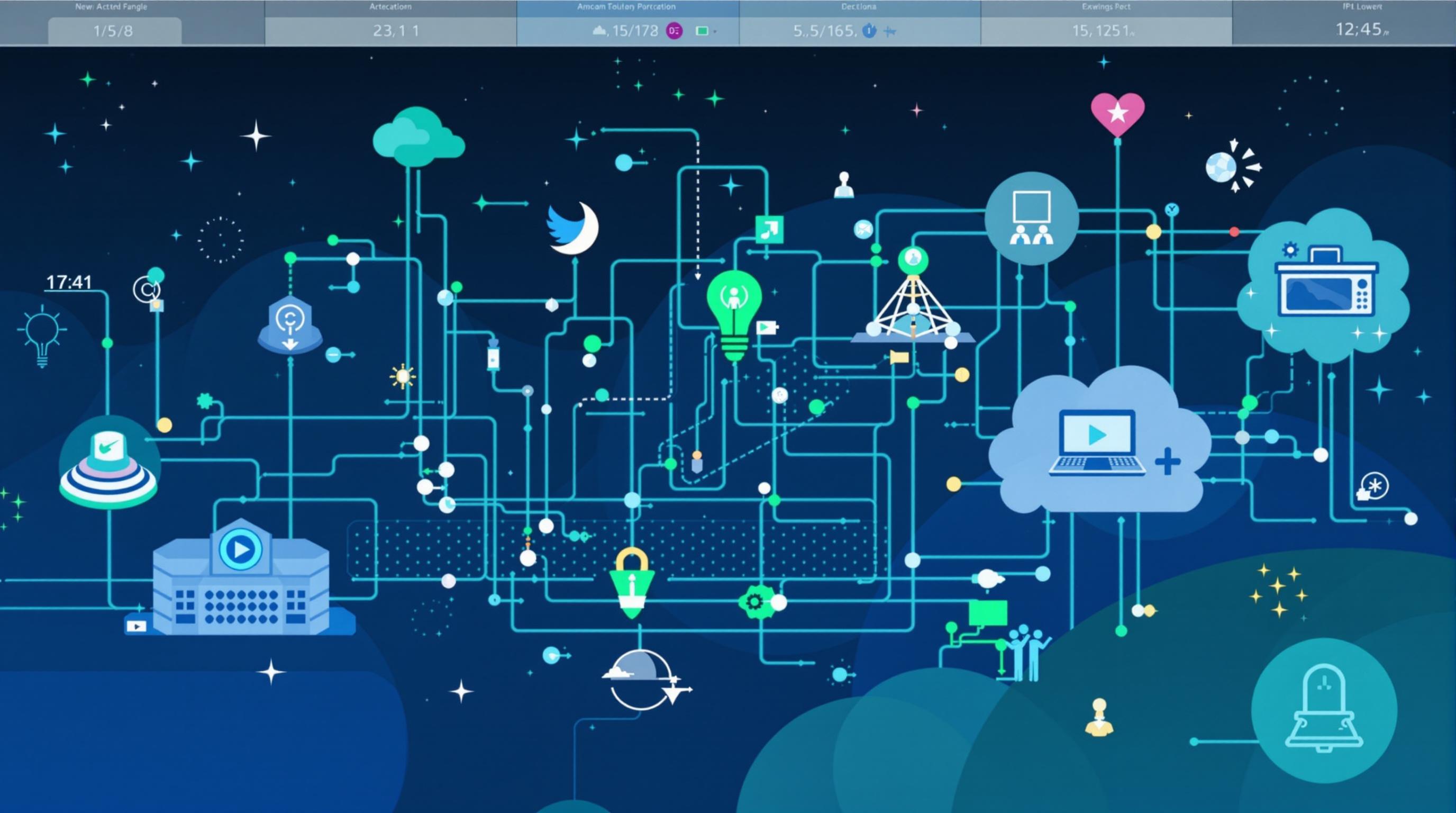Related Articles
- Harnessing Nostalgia: How Memory Mapping Can Inspire Innovative Urban Infrastructure Solutions
- Revealing the Invisible: How Urban Legends Influence Public Perception of Infrastructure Projects
- Whimsical Structures: How Playgrounds Can Inspire Innovative Approaches to Urban Infrastructure Development
- The Enigmatic Impact of Dark Fiber Networks on the Future of Digital Ecosystems and Their Capacity to Scale
- Beyond the Horizon: Exploring the Impact of Cultural Nuances on Global Digital Infrastructure Expansion
- Whispers of the Future: How AI-Driven Edge Computing Redefines Network Resilience and Flexibility
The Enigmatic Impact of Dark Fiber Networks on the Future of Digital Ecosystems and Their Capacity to Scale
The Enigmatic Impact of Dark Fiber Networks on the Future of Digital Ecosystems and Their Capacity to Scale
Dark fiber networks, often seen as a mysterious undercurrent in the tech world, are redefining the way we view digital ecosystems and their scalability. This article delves into how these untapped fibers hold the potential to revolutionize the future of connectivity, offering speed, flexibility, and unprecedented growth.
The Hidden Treasure of Fiber Optics
Imagine walking through a vast, shadowy forest. Beneath your feet lies a network of paths, unseen but rich in potential. Dark fiber networks provide a similar thrill—a vast infrastructure that many don’t know exists. Just like those undiscovered trails, dark fibers are underutilized cables that, when tapped, could change our digital landscape dramatically.
What is Dark Fiber?
To kick things off, what exactly is dark fiber? In short, these are unused fiber optic cables that have been laid but aren't currently being used to transmit data. Organizations, typically telecom companies, install these cables with the foresight of future demand. According to a recent report by Market Research Future, the global market for dark fiber is projected to reach a staggering $7 billion by 2025, growing at a compound annual growth rate (CAGR) of approximately 10.8% (Market Research Future, 2020). This is just the tip of the iceberg when it comes to understanding how dark fiber can influence digital ecosystems.
From Lights Out to Lights On
Consider the analogy of a dormant volcano. It lies silent for years, but when it erupts, it can reshape entire landscapes. Similarly, dark fiber has the potential to spark new internet services and enhance existing ones. Once these fibers are lit up, they can support vast amounts of data transmission, vastly improving internet speeds and connectivity.
The Case for Businesses
For businesses, the ability to harness dark fiber translates into a personalized network tailored to their specific needs. A great example of this is Microsoft’s investment in dark fiber. By utilizing custom-built fiber networks, they scaled their Azure cloud services to meet the soaring demands of digital storage and computation. Their strategic applications of dark fiber not only increased speed but also resulted in better data security—a priority for businesses today.
Scalability: A Golden Opportunity
The appeal of dark fiber networks lies in their scalability. A study by Analysys Mason states that dark fiber helps businesses handle “exponential data growth” more effectively than traditional networks. This growth isn’t just theoretical. With the explosion of IoT, predictions suggest the number of connected devices will surpass 75 billion by 2025 (Statista, 2021). Dark fiber could be the backbone supporting this inevitable surge.
The Consumer’s Perspective
While corporate growth is undoubtedly important, what about the average consumer? Well, they stand to gain immensely too. Imagine streaming an ultra-high-definition movie without buffering, or engaging in virtual reality without lag. Dark fiber networks can facilitate these advancements, offering a seamless digital experience. Let’s face it: nobody wants to watch their favorite show only to have it buffer right at the climax. Who needs that kind of drama?
The Tech Playground
The gaming industry has already begun leveraging dark fiber in innovative ways. For instance, platforms like Google Stadia promise ultra-low latency gaming experiences, but this can only materialize with strong, robust infrastructure. Dark fiber serves not just gaming but also cloud computing, telemedicine, and smart cities, providing the speed and reliability these services require. As cities evolve into smart havens, the demand for bandwidth will soar, and dark fiber could be the ISP (Internet Service Provider) many never knew they needed.
A Balancing Act: Cost vs. Benefit
It’s not all sunshine and rainbows; there are pros and cons to consider. Installing dark fiber is a hefty upfront investment. The cost of laying new cables, while potentially enormous, needs careful consideration against future savings and adaptability. However, when evaluated through the lens of long-term gains, the scalability and flexibility make it an attractive proposition.
The Accessibility Dilemma
Did you know? According to a Pew Research study, 23% of Americans still don’t have access to broadband internet. If dark fiber networks become more widespread, it could bridge this digital divide, ensuring equitable access to high-speed internet. Companies like Facebook are already investing in infrastructure solutions to expand connectivity in underserved areas.
Benefits Beyond Speed
Speed isn't the only benefit of dark fiber; think enhanced reliability and security. Transmission over a fiber optic network is less susceptible to interference compared to traditional copper cables. For sensitive operations—like banking or healthcare—this kind of security is paramount. Cybersecurity will require more than just passwords; organizations need resilient infrastructure as well.
Addressing Environmental Challenges
But there’s more to consider: environmental concerns. With our growing focus on sustainability, dark fiber networks can offer a more eco-friendly solution. Fiber optic technology consumes less energy than traditional copper wiring and can help minimize carbon footprints. As nations move toward green energy and carbon neutrality, investing in dark fiber is not just a tech upgrade; it's a conscious environmental decision.
A Creative Solution for the Future
Let’s jump into the world of creative solutions. In a rapidly evolving digital ecosystem, dark fiber can empower entrepreneurs and startups to create entirely new business models. Imagine a healthcare startup leveraging dark fiber networks to transmit real-time patient data across cities to facilitate telemedicine—revolutionizing the way we receive medical care. Or, think about tech companies experimenting with augmented and virtual reality. These innovative applications can thrive only with robust underlying infrastructure, which dark fiber could provide.
The Role of Policy and Regulation
The future of dark fiber also hinges on policy and regulation. Governments must pave the way for more accessible utilities by reducing penalties and promoting competitive markets. As seen in Sweden's broadband initiative; after enacting favorable policy, broadband penetration soared from 5% to over 95% in just a few years. This serves as a compelling case study in how governmental action can stimulate both availability and innovation.
Conclusion: The Future is Bright (and Dark)
So, what does the future hold for dark fiber networks in digital ecosystems? Experts predict an interconnected world where these underused resources not only enhance connectivity but also nurture innovation, support small businesses, and bridge the digital divide. If utilized wisely, dark fiber networks could become a vital instrument in achieving a truly integrated and inclusive digital future. It's time to shine the light on dark fiber and unleash its full potential!
In essence, whether you're a business magnate or a casual internet user, dark fiber networks might just be the hidden gem we've all been seeking. Invest in them wisely, and who knows? You could have a front-row seat to the future of digital connectivity and ecosystem scalability.





